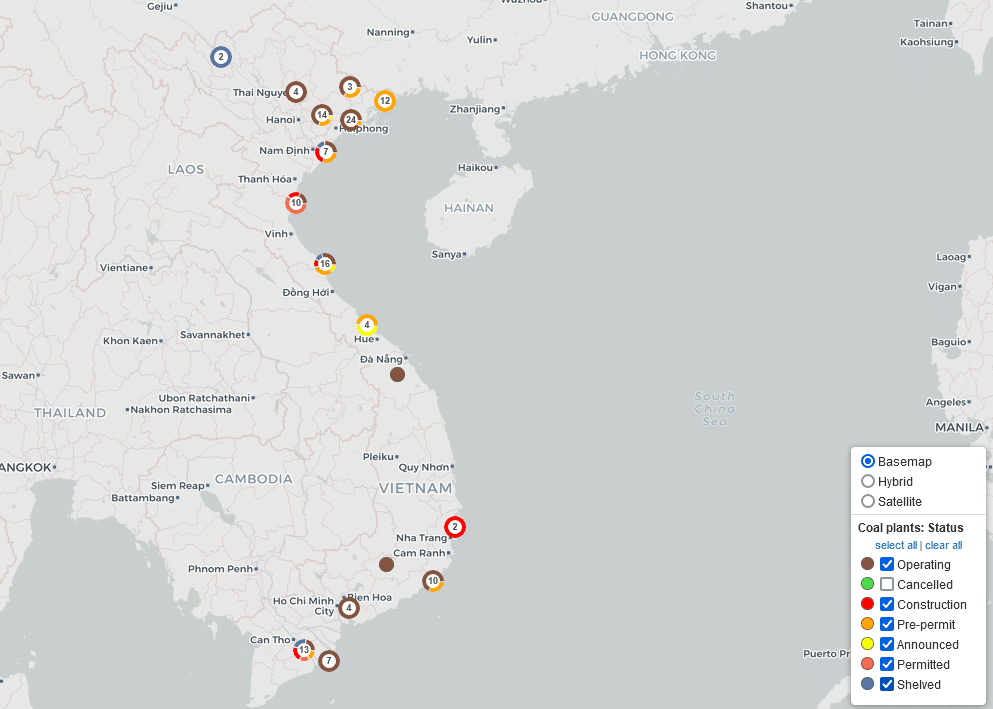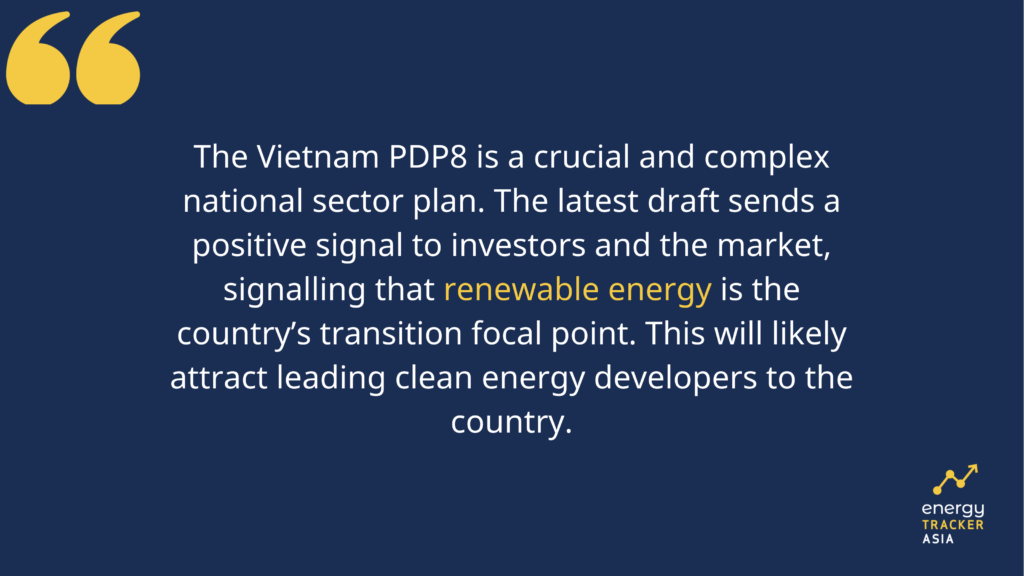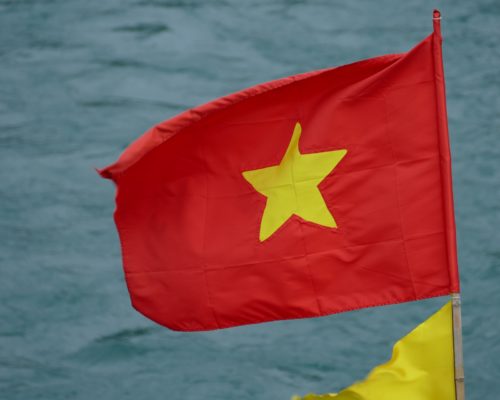The Latest PDP8 Vietnam Draft – Focus on Renewable Energy and a Drastic CO2 Emissions Reduction
18 May 2022 – by Viktor Tachev
The PDP8 saga in Vietnam has taken a new turn. After initially targeting increased renewable energy adoption, the country then sacrificed it for coal. At COP26, Vietnam committed to phasing out coal. The latest move now takes the country back on the right track by targeting a drastic CO2 emission reduction. If Vietnam achieves the goal, it will reclaim its crown as Asia’s renewable energy powerhouse.
The Essence of the Latest PDP8 Vietnam Draft
The latest version of the National Power Development Plan (PDP) for the 2021-2030 period, with a vision to 2045 (PDP VIII), targets drastic reductions in CO2 emissions. The plan proposes to increase electricity capacity to 146,000 MW by 2030. However, unlike previous versions, the focus will no longer be on fossil fuels. The latest draft proposes a 50.7% share of wind and solar power, compared to 40% in previous versions.
The plan also aims to limit the country’s reliance on fossil fuels and avoid adding any new coal-fired power plants. The draft proposes a road map for cutting coal-fired electricity to just 9.5% of total capacity by 2045. This is way below the approximately 15% to 19% laid out in previous PDP8 versions. The planned reduction will likely have a major impact on the country’s coal fleet expansion plans.

Adding Biomass, Ammonia and Hydrogen to the Mix
Compared with the previous versions, the latest draft focuses on alternative forms of energy. The vision laid out in the PDP8 now intends to move from coal and natural gas to biomass, ammonia and hydrogen.
By halting the expansion of Vietnam’s fossil fuel fleet, the move will help further reduce CO2 emissions and assist the country’s decarbonisation journey.
Why the Updates of the Latest Vietnam PDP8 Draft Matter
PDP8 is a crucial and complex national sector plan. As such, it is of particular interest to various parties, including investors, agencies, scientists and – most importantly – local communities. To successfully draft a thorough and well-versed plan, the government collaborated with different third parties to acquire relevant data and know-how on renewables, net-zero emissions and energy diversification.
The latest PDP8 draft aims to overcome the shortcomings of the PDP7 and the PDP8 drafts from March 2021. It also aligns with Resolution No. 55 on the national energy development strategy by 2030 with a vision towards 2045.
Furthermore, the plan will address issues stemming from the current energy situation in the country.
One is Vietnam’s increased dependency on coal imports. Another is the challenges arising from the exponential boom of solar capacity at the end of 2020. However, the inability of the transmission lines to keep up with it led to production losses.
To achieve its 50% clean energy capacity target, S&P Global Commodity Insights estimates that Vietnam will need 42.7 GW of onshore wind, 54 GW of offshore wind and 54.8 GW of solar power by 2045. If the country succeeds, it will reclaim its position as one of the global clean energy leaders.
While Vietnam is known for its solar power progress, the wind sector also has the potential to achieve notable growth. According to estimates from Fitch Solutions, wind capacity has managed to surpass solar recently. Furthermore, the agency concludes that it will likely continue doing so in the short to medium term.
What the Continuous PDP8 Vietnam Pivoting Means
PDP8 is a complex plan that should acknowledge many relevant factors – from identifying the most suitable energy sources and electricity transmission grid structure to ensuring reasonable prices and fulfilling Vietnam’s commitment at COP26 to achieve “net-zero emissions by 2050”.
The several revisions to the PDP8 draft show that the government has been going back and forth on its ideas. So far, the officials have found it challenging to develop a clear plan for the country’s energy system transformation. However, the bottom line of this continuous change of heart is that the Vietnam government is looking to shape the ultimate solution to all the challenges towards decarbonisation.
The latest Vietnam PDP8 draft sends a positive signal to investors and the market. It signals that renewable energy will indeed be a focal point of the country’s transition. This will likely attract leading clean energy developers to the country, similar to the case of Orsted, which in November 2021 proposed building a USD 13.6 billion offshore wind project off Hai Phong with a total capacity of 3.9 GW.
Vietnam Holds Its Future in Its Own Hands
The latest draft of the Vietnam PDP8 is in stark contrast with the two previous versions. It is a powerful testament that the country is determined to expedite its decarbonisation journey.
However, the aggressive switch from coal to wind and solar power from now through to 2045 won’t come without its challenges. While Vietnam has already laid the groundwork with a series of recently introduced market reforms, without additional grid enhancements and policy incentives, it might struggle to balance its decarbonisation journey with the ambitious goal of becoming a global manufacturing leader.
However, Vietnam’s solar power boom at the end of 2020 has already proven that if the country sets its eyes on its target, nothing can stop it.

by Viktor Tachev
Viktor has years of experience in financial markets and energy finance, working as a marketing consultant and content creator for leading institutions, NGOs, and tech startups. He is a regular contributor to knowledge hubs and magazines, tackling the latest trends in sustainability and green energy.
Read more


